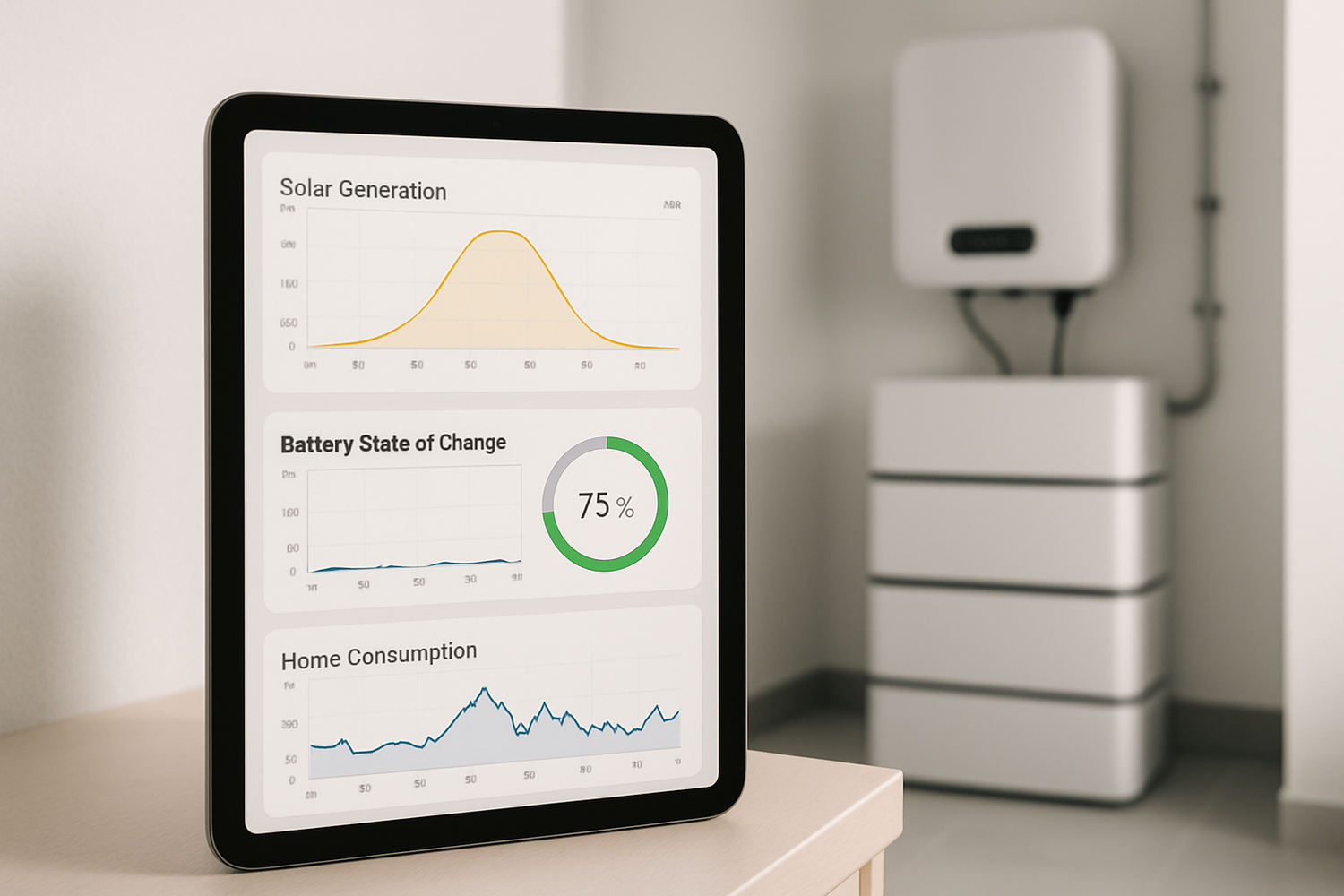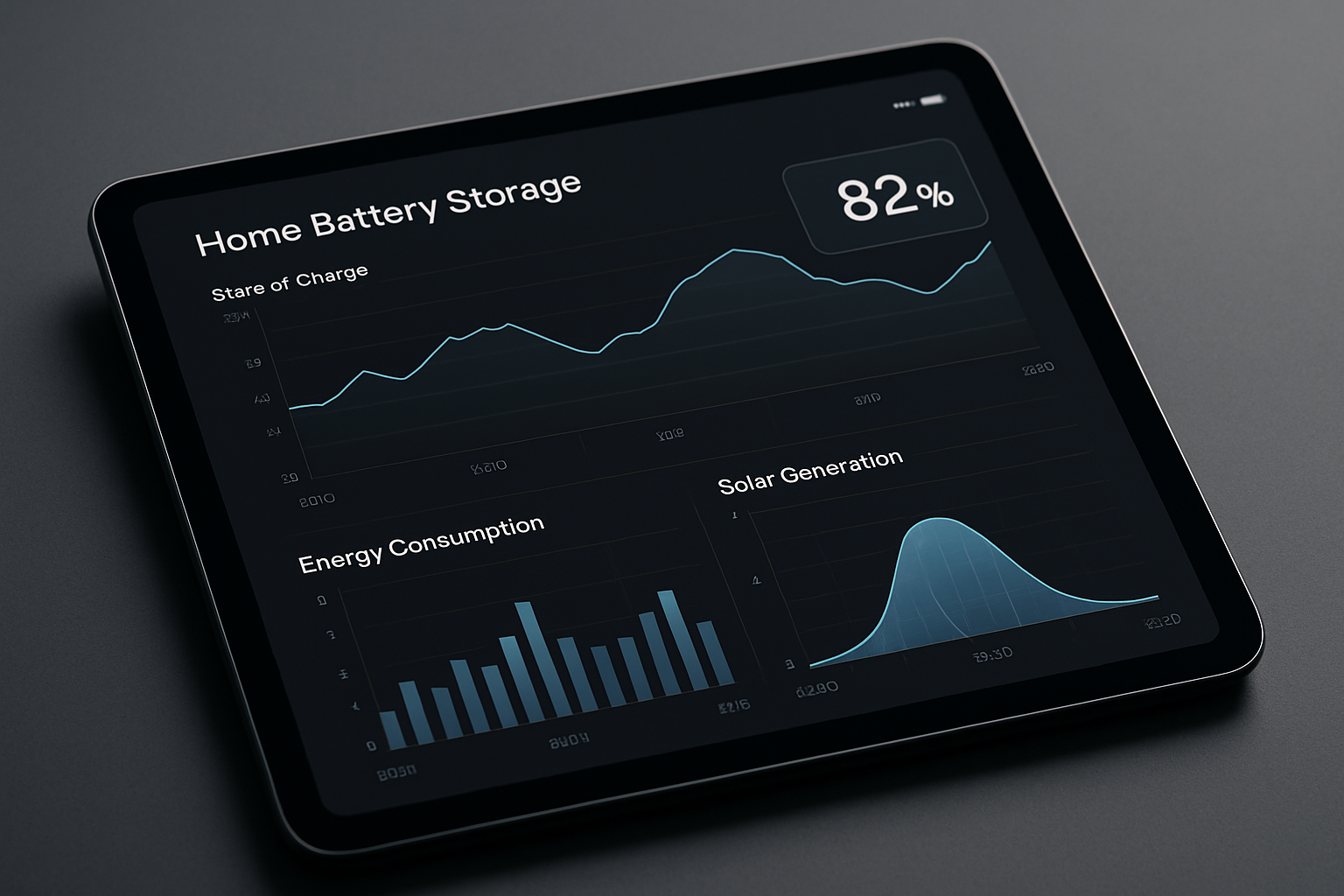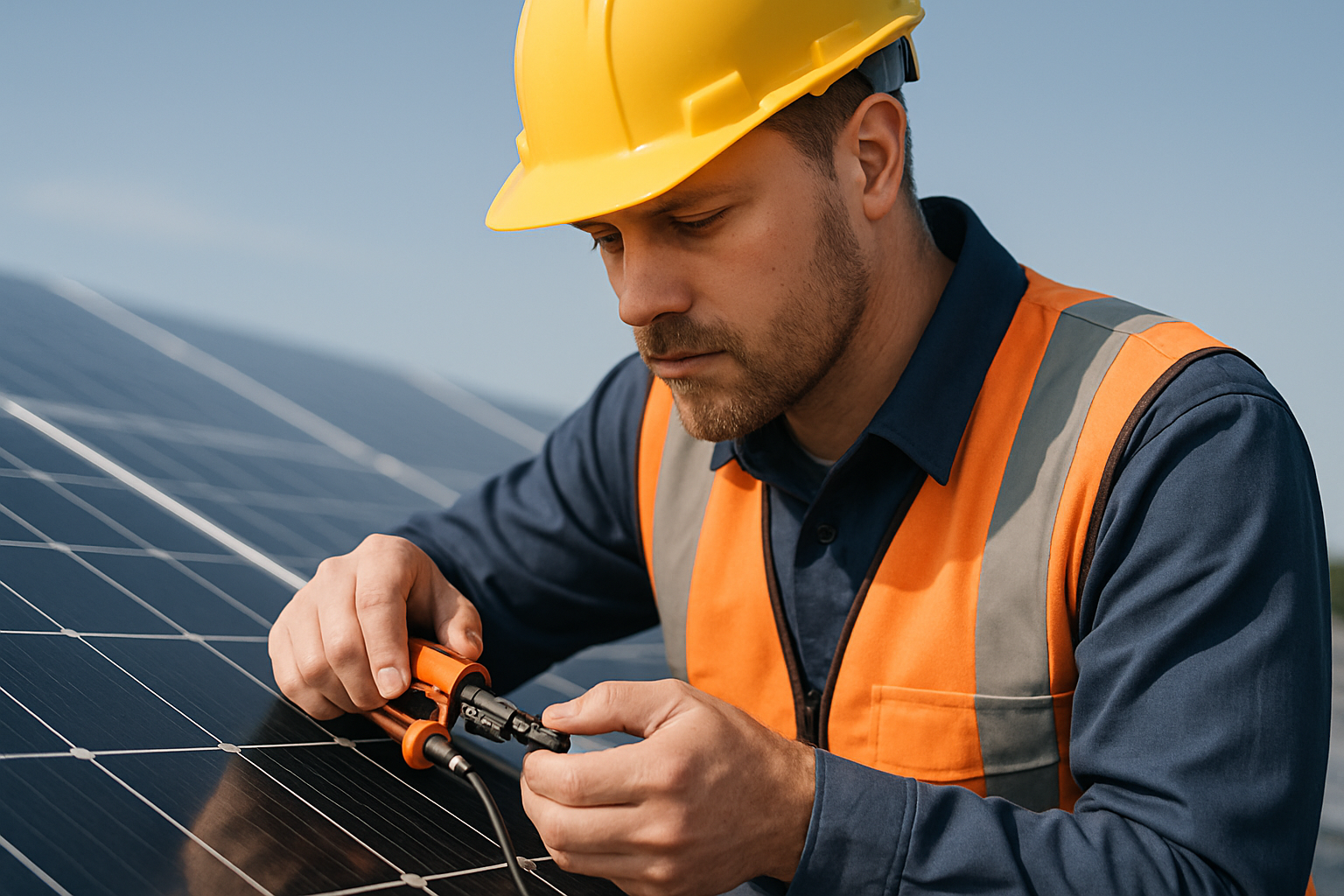A hybrid energy system, combining solar panels with battery storage, is a significant step toward energy independence. But installing the system is only the beginning. To ensure it operates at peak efficiency and delivers a strong return on investment, ongoing performance monitoring is crucial. This guide provides a detailed look at the methods and metrics used for effective hybrid system monitoring, drawing from years of hands-on experience in the solar and storage industry.
Think of it as a regular health checkup for your energy system. By keeping a close watch on its vital signs, you can spot minor issues before they become major problems, extend the lifespan of your components, and ensure you're getting the most out of every ray of sunshine. According to the International Energy Agency (IEA), robust monitoring and data analysis are key to optimizing power generation and ensuring system reliability.
Chapter 1: The Core Components and Why They Need Monitoring
A typical hybrid system consists of solar panels, a charge controller, a battery bank, and a hybrid inverter. Each component plays a distinct role, and its performance directly impacts the entire system. Understanding what to watch for in each part is the first step in a successful monitoring strategy.
1.1 The Hybrid Inverter: The Brain of the Operation
The hybrid inverter is the heart and brain of your system, managing the flow of energy between the solar panels, batteries, and your home. Monitoring the inverter provides a wealth of information about the overall health of your setup. Modern inverters often come with built-in LCD screens or connectivity to mobile apps, offering real-time data.
Key metrics for your inverter include its input/output voltage, power output, and operating temperature. An unexpected drop in power output, even on a sunny day, could signal an issue. Likewise, overheating is a common cause of reduced efficiency and can shorten the inverter's lifespan. For more details on interpreting inverter data, you can reference how to set up solar monitoring across inverter and battery.
1.2 The Battery Bank: Your Energy Reservoir
Your battery bank, especially a high-performance LiFePO4 (Lithium Iron Phosphate) battery, is your key to using solar power after the sun goes down. Monitoring its health is vital for longevity and reliability. The Battery Management System (BMS) is the primary tool for this, providing critical data on the battery's status. For a deeper dive, see our guide on How to Read Data from Your 12V 100Ah LiFePO4 Battery BMS.
Essential battery metrics include State of Charge (SoC), voltage, current, and temperature. Keeping an eye on these helps prevent overcharging or deep discharging, both of which can degrade the battery over time. ANERN's residential energy storage systems integrate advanced LiFePO4 batteries with a sophisticated BMS, designed for safety and a long cycle life, making monitoring straightforward and effective.
1.3 Solar Panels: The Power Generators
While solar panels are generally low-maintenance, their performance can be affected by environmental factors like dirt, debris, or shading. A gradual or sudden decrease in energy production is the most telling sign of a problem. Regular visual inspections can help you spot issues like discoloration or cracks. For more information on identifying underperformance, our article Is Your Deep Cycle Lithium Battery Underperforming? Find Out offers valuable insights that also apply to panel health.
Chapter 2: Key Metrics for Performance Monitoring
Effective monitoring relies on tracking the right Key Performance Indicators (KPIs). These metrics give you a clear picture of your system's health and efficiency. Complex energy systems require performance evaluation to meet their objectives, which is achieved by identifying KPIs that monitor progress.
2.1 Real-Time System Metrics
Real-time data allows for the immediate identification of issues. Most modern monitoring systems, including those integrated into ANERN's solar inverters, provide this information through a user-friendly interface.
- Power Output (kW): Shows the current amount of power your system is generating. This will fluctuate with sunlight intensity.
- Energy Production (kWh): Measures the total amount of energy produced over a period (daily, monthly, annually). This is a key metric for calculating your return on investment.
- State of Charge (SoC %): Indicates the current charge level of your battery bank. This helps you manage your energy usage effectively.
- Voltage and Current: Monitoring voltage and current levels is essential for ensuring the electrical integrity and safety of the system.
2.2 Long-Term Performance Analysis
Analyzing data over weeks and months reveals trends that aren't visible in real-time data. A gradual decline in energy production, for instance, might point to panel degradation or accumulating dirt. Many monitoring platforms allow you to export data, which can be useful for more in-depth analysis. Data analytics helps in identifying patterns and making data-driven decisions for system optimization. To understand what to look for over the long term, explore the 5 Key Metrics for Monitoring Your Lithium Ion Solar Battery.
| Metric | Typical Healthy Range | Potential Issue Indicator |
|---|---|---|
| Daily Energy Production (kWh) | Consistent with seasonal expectations | >15% drop in similar weather conditions |
| Battery SoC at Sunrise | >20% (depending on overnight usage) | Consistently below 10% |
| Inverter Temperature | < 60°C (140°F) | Consistently > 65°C (149°F) |
| Panel Voltage (Voc) | Matches manufacturer's specifications | Significant deviation |
Chapter 3: Hybrid Power Controller Diagnostics
When your monitoring reveals a potential problem, the next step is diagnostics. A systematic approach can help you pinpoint the root cause quickly and efficiently. Many common problems can be identified and resolved with some basic troubleshooting.
3.1 Common Issues and Troubleshooting Steps
Before diving into complex diagnostics, start with the basics. Many issues stem from simple, fixable problems.
- Loss of Power Generation: Check for obvious obstructions shading the panels, like new tree growth. Ensure the panels are clean from dirt or bird droppings. Also, inspect all wiring and connections to make sure they are secure and free of corrosion.
- Inverter Faults: If the inverter displays an error code, consult the user manual to understand the issue. Sometimes, a simple reboot can resolve temporary glitches. Persistent errors may require professional assistance.
- Battery Not Charging: Verify that the charge controller settings are correct for your battery type (e.g., LiFePO4). Check the connections between the charge controller, panels, and batteries.
For a structured guide on what to do when things go wrong, consider reviewing these 7 Common Mistakes in Solar Energy Storage System Monitoring.
3.2 Advanced Diagnostic Tools
For more elusive problems, advanced tools can provide deeper insights. A multimeter is invaluable for checking voltage and continuity at different points in the system. For battery health, a load tester can assess its ability to hold a charge under demand. Some monitoring systems, known as SCADA (Supervisory Control and Data Acquisition) systems, offer highly detailed diagnostics and remote control capabilities, often used in larger installations. If you're dealing with a 48V system, our guide on Advanced Diagnostics for Your 48V LiFePO4 Battery System can be particularly helpful.
Chapter 4: Proactive System Health Checks
Regular, proactive health checks are the best way to ensure the long-term reliability of your hybrid power system. This involves more than just watching a screen; it includes periodic physical inspections and data reviews.
4.1 Creating a Maintenance Schedule
A simple maintenance schedule can make a significant difference. Here’s a sample routine:
- Weekly: Glance at your monitoring app or inverter display to check for any alerts and ensure production levels are normal for the weather conditions.
- Monthly: Perform a quick visual inspection of the entire system. Look for debris on panels, check that wiring is secure, and ensure the inverter's ventilation is clear.
- Annually: Schedule a professional inspection. A qualified technician can perform more detailed tests, check torque on electrical connections, and identify potential issues that aren't obvious to the untrained eye.
For a comprehensive checklist, refer to A Pro's Guide to Home Battery Storage System Health Checks.
4.2 The Role of Data in Predictive Maintenance
Your monitoring data is a powerful tool for predictive maintenance. By analyzing trends over time, you can anticipate needs before they become critical. For example, tracking the cycle life of your LiFePO4 battery can help you estimate its remaining lifespan. The International Renewable Energy Agency (IRENA) highlights that technical operations, including real-time monitoring and fault detection, are crucial for the longevity of renewable power systems. As shown in a Case Study: Maximizing a 12V LiFePO4 Battery's Lifespan, proactive adjustments based on data can significantly extend component life.
Moving Forward with Confidence
Monitoring your hybrid system's performance is not about waiting for something to break. It's an active process of engagement that empowers you to maintain a reliable, efficient, and long-lasting source of clean energy. By understanding the key components, tracking the right metrics, and performing regular health checks, you take control of your energy future.
At ANERN, we are committed to providing reliable and scalable energy solutions. Our integrated systems, from high-performance LiFePO4 batteries to intelligent hybrid inverters, are designed with monitoring in mind. We believe that giving you the tools and knowledge to manage your system effectively is fundamental to achieving true energy independence.
Disclaimer: This article is for informational purposes only and does not constitute professional electrical or financial advice. Always consult with a qualified professional before making decisions about your energy system.





Leave a comment
All comments are moderated before being published.
This site is protected by hCaptcha and the hCaptcha Privacy Policy and Terms of Service apply.